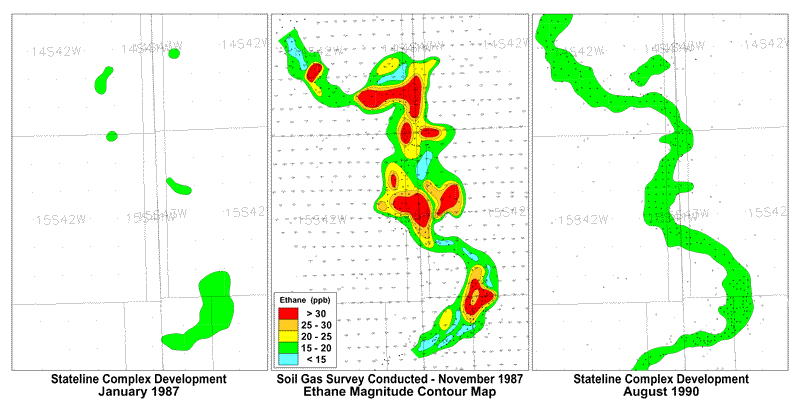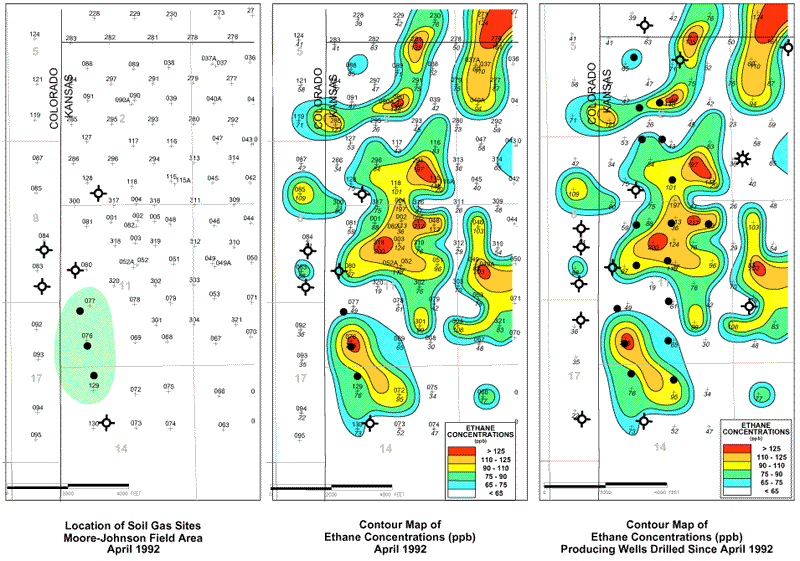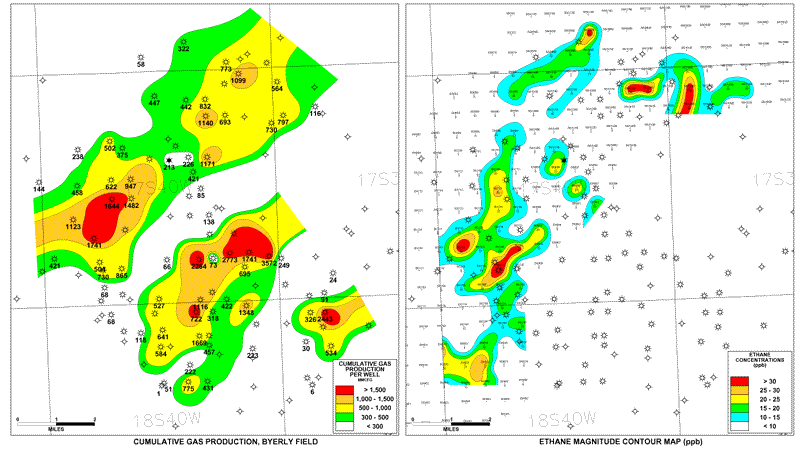
How to Design an Exploration Surface Soil Gas Geochemical Survey: Illustrated by Application Examples from the Hugoton Embayment of SE Colorado and SW Kansas
Three regional surface geochemical soil gas surveys covering areas of 150, 53, and 209 square miles were conducted in the Hugoton Embayment of southeast Colorado and southwest Kansas. The three surveys exhibit different sampling densities and comprise both reconnaissance and detailed grids. The surveys were conducted over the prolific Pennsylvanian Morrow Stateline Trend and the Permian Chase Carbonate Gas Trend.
The stratigraphic entrapment of oil and gas in these two plays, relatively shallow depth, and highly variable porosity and permeability of the reservoirs are factors which favor the application of surface soil gas surveys as an important exploration method to reduce risk in exploration, exploitation, or development efforts in these two plays. Examples of actual reconnaissance and detailed surface soil gas surveys in this petroleum province are discussed.
The surveys were conducted from 1987 to 1992 before there was the widespread development drilling as witnessed today. Both the benefits and limitations of a reconnaissance survey over the Stateline Trend from Fronterra to Second Wind Fields are discussed. A detailed survey in the Moore-Johnson Field area illustrates the benefits of surface geochemistry in risk reduction in this stratigraphicly complex area. An example of a detailed soil gas survey over Byerly Field in Greeley County Kansas is presented which depicts the complex porosity and permeability variations in the Chase Carbonate.
The paper is a retrospective analysis of soil gas surveys conducted in this complex area in light of new geologic knowledge of the area that has been revealed in the past decade.
Reconnaissance Soil Gas Survey - Morrow Stateline Trend, Kansas

Detailed Soil Gas Survey - Moore-Johnson Field, Greeley Co., Kansas

Detailed Soil Gas Survey - Byerly Field, Greeley Co., Kansas
